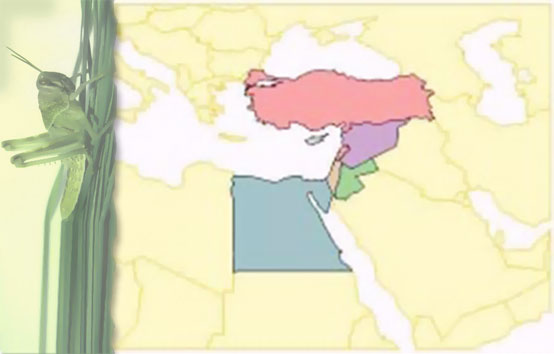Olive

Olives
Yoram Ashheim for the Hebrew University
Olive is the vernacular name for the fruit of Olea europaea L., (family Oleaceae) as well as for the evergreen tree which bears that fruit. Olives have been grown in the Near East since antiquity, being one of the earliest cultivated fruit trees in this region. Olives are now grown in Southern Europe, East Africa, China, Australasia and the Americas. More than 90% of the world crop is produced around the Mediterranean; the largest producers being Spain and Italy. Turkey is the major producer in the Eastern Mediterranean.
Mature olive trees are 7-15 m in height and grow on many soil types, including those that are saline or alkaline, as well rocky hillsides, but they do best on deep, well-aerated soils. The trees, which are relatively drought-resistant, prefer mild climates, cold winters followed by warm summers. The leaves are silvery to pale green, borne on thin branches. Olive trees usually blossom in the spring, the fruit growing and maturing during summer and autumn. Olive trees are very long-lived (several hundred years) and bear a commercial fruit crop from their sixth year.
The olive fruit is a drupe, containing a single stony seed. The immature fruit is green, turning reddish and becoming purple-black when ripe. The fleshy fruit part contains oil whose content increases with maturity. Different varieties, which differ in size, acidity, and color, are grown for table olives or for the oil from ripe fruits. The unripe, green fruit, sold as pickled edibles, is cured in brine or lye. Most of the crop (ca 90%) is extracted for oil, of which there are several official grades, based on the extraction procedure and the degree of acidity. The oil, which contains unsaturated fatty acids, is a good source of antioxidants and is use in many diets. In the past the oil was used as fuel for lightening; nowadays it is incorporated in cosmetics, applied in folk medicine and in the production of soap. Olive leaves may serve as fodder. The trees can also provide protection against soil erosion and impede the movement of sands in deserts. Olive fruit and branches have various religious, ritual and cultural functions, and are regarded as peace symbols (thus “extending the olive branch”).
Olive pests in the Middle East
References
Bartolini, G. and Petruccelli, R. 2002. Classification, Origin, Diffusion and History of the Olive. FAO, Rome.
Loumou, A. and Giourga, C. 2003. Olive groves: The Life and Identity of the Mediterranean. Agriculture and Human Values 20: 87-95.
Tous, J. and L. Ferguson. 1996. Mediterranean fruits. In: J. Janick (ed.), Progress in New Crops, pp. 416-430. ASHS Press, Arlington, VA.
Websites
http://www.hort.purdue.edu/newcrop/proceedings1996/V3-416.html
